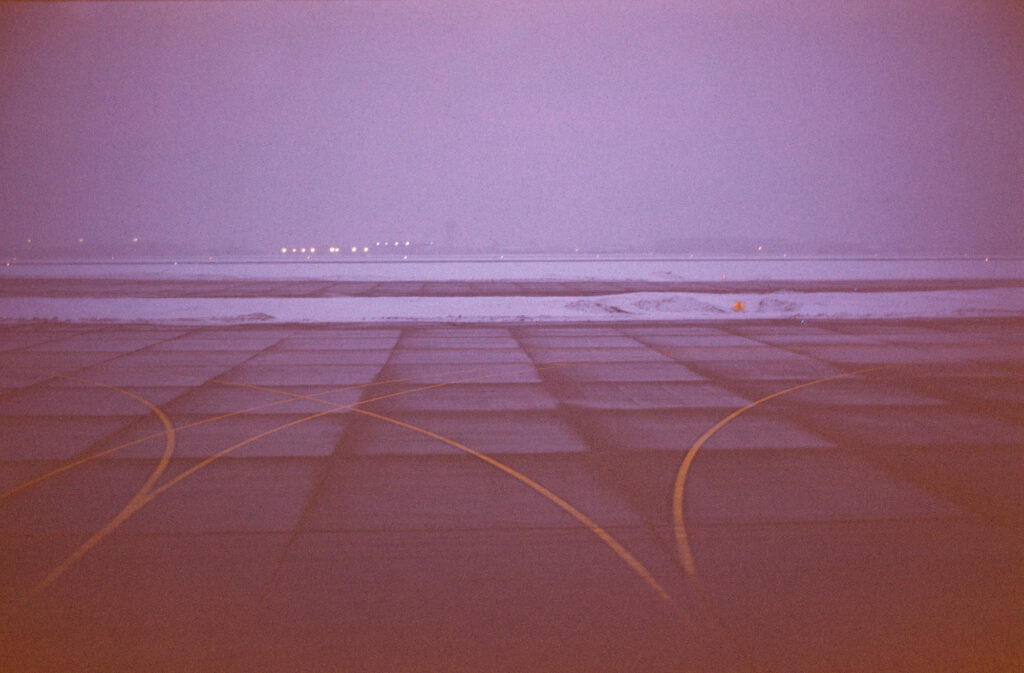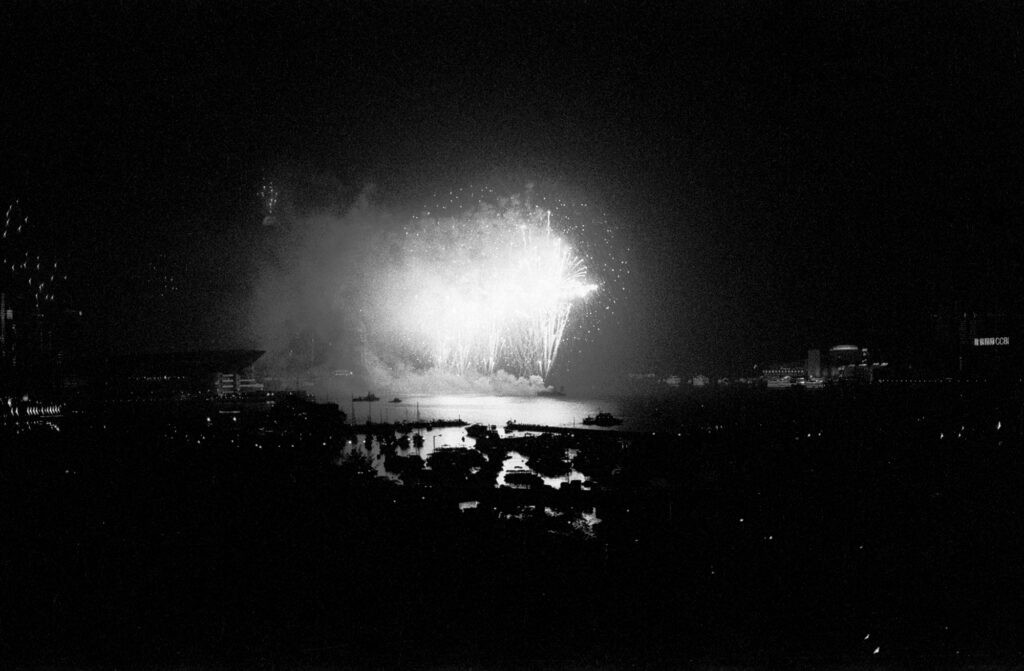Taking photos like Wong Kar Wai involves mastering a blend of techniques and artistic sensibilities, and dfphoto.net is here to guide you through the process. This guide explores the key elements of his style, offering insights and practical tips for capturing cinematic and evocative images. Discover how to emulate his signature use of color, composition, and storytelling in your own photography.
1. What Defines Wong Kar Wai’s Photography Style?
Wong Kar Wai’s photography style is characterized by its dreamlike quality, achieved through vibrant colors, blurred motion, and unconventional compositions. According to film scholar David Bordwell, Wong Kar Wai’s visual style emphasizes mood and atmosphere over narrative clarity. His works often feature:
- Vibrant Colors: Rich, saturated colors that evoke specific emotions.
- Blurred Motion: Intentional use of motion blur to convey speed and dynamism.
- Unconventional Compositions: Off-center framing and unique perspectives.
- Narrative Ambiguity: Suggestive storytelling that leaves room for interpretation.
- Atmospheric Lighting: Use of light and shadow to create mood and depth.
To truly capture the essence of Wong Kar Wai’s style, you need to understand the underlying principles that drive his artistic choices.
2. How Can I Use Color Like Wong Kar Wai?
To use color like Wong Kar Wai, focus on selecting and enhancing colors that evoke specific emotions. According to production designer William Chang, color is a crucial storytelling element in Wong Kar Wai’s films. Here’s how to do it:
- Choose a Color Palette: Select a limited number of dominant colors that complement each other.
- Saturate Colors: Increase the saturation to make colors more vivid and intense.
- Use Color Grading: Adjust the color balance in post-processing to achieve a specific mood.
- Contrast Colors: Combine contrasting colors to create visual interest and highlight key elements.
- Consider Color Symbolism: Use colors that have symbolic meanings to enhance the narrative.
For example, reds and golds can symbolize passion and prosperity, while blues and greens can evoke calmness and nostalgia.
3. What Are the Best Techniques for Achieving Motion Blur in My Photos?
Achieving motion blur in your photos involves using specific camera settings and techniques to convey movement. Cinematographer Christopher Doyle often used innovative techniques to create a sense of speed and disorientation in Wong Kar Wai’s films. Here’s how to do it:
- Slow Shutter Speed: Use a slow shutter speed (e.g., 1/30th of a second or slower) to capture movement.
- Panning: Move the camera along with the subject to keep it relatively sharp while blurring the background.
- Zooming: Adjust the zoom lens during the exposure to create a radial blur effect.
- Intentional Camera Movement: Shake or move the camera during the exposure to create abstract patterns.
- Experiment with Different Speeds: Try different shutter speeds to find the right balance between sharpness and blur.
Experimentation is key to mastering motion blur and achieving the desired effect.
4. How Do I Create Unconventional Compositions in Photography?
Creating unconventional compositions in photography involves breaking away from traditional rules and exploring new perspectives. Wong Kar Wai’s use of unusual framing and angles often adds a layer of intrigue to his visuals. Here’s how to do it:
- Rule of Thirds: Intentionally break the rule of thirds to create tension and imbalance.
- Off-Center Framing: Place the subject off-center to create a sense of unease or curiosity.
- Obstructed Views: Shoot through objects or use foreground elements to partially block the subject.
- Unusual Angles: Experiment with high and low angles to create a unique perspective.
- Symmetry and Patterns: Use symmetry or repeating patterns in unexpected ways to create visual interest.
Embrace experimentation and trust your instincts to create compositions that are visually striking and emotionally resonant.
5. What Role Does Lighting Play in Wong Kar Wai’s Photography Style?
Lighting is a critical element in Wong Kar Wai’s photography style, used to create mood, depth, and atmosphere. According to lighting expert John Alton, effective lighting enhances the emotional impact of a scene. Here’s how to use lighting effectively:
- Use of Shadows: Incorporate deep shadows to create a sense of mystery and drama.
- Backlighting: Use backlighting to create silhouettes and highlight the edges of the subject.
- Ambient Light: Rely on natural or ambient light to create a sense of realism.
- Color Temperature: Adjust the color temperature to create warm or cool tones that match the mood.
- Contrast: Use high contrast lighting to create a dramatic effect and emphasize textures.
Experiment with different lighting techniques to find what works best for your subject and desired mood.
6. How Can I Incorporate Narrative Elements into My Photos?
Incorporating narrative elements into your photos involves telling a story through visual cues and suggestive details. Wong Kar Wai’s films often use subtle storytelling techniques to create a sense of mystery and intrigue. Here’s how to do it:
- Capture Expressions: Focus on capturing genuine expressions that convey emotions and intentions.
- Include Contextual Details: Include elements in the frame that provide context and tell a story.
- Use Symbolic Objects: Incorporate objects that have symbolic meanings to enhance the narrative.
- Create Ambiguity: Leave some elements of the story open to interpretation to engage the viewer’s imagination.
- Series of Images: Create a series of images that tell a story over time.
Think about the story you want to tell and use visual elements to convey that story in a compelling way.
7. What Equipment Is Needed to Recreate Wong Kar Wai’s Aesthetic?
Recreating Wong Kar Wai’s aesthetic doesn’t necessarily require expensive equipment, but certain tools can help you achieve the desired look. According to photography gear reviewer Ken Rockwell, the right equipment can enhance your creative vision. Here’s a list of essential equipment:
| Equipment | Description | Benefits |
|---|---|---|
| Camera | A camera with manual controls (DSLR, mirrorless, or even a smartphone with manual mode). | Allows for precise control over aperture, shutter speed, and ISO. |
| Lenses | A variety of lenses, including wide-angle, standard, and telephoto lenses. | Provides flexibility in capturing different perspectives and focal lengths. |
| Lighting | External flash, reflectors, and softboxes. | Enables you to control and manipulate light to create the desired mood and atmosphere. |
| Color Filters | Color gels for your flash or lens filters. | Helps you create specific color effects and enhance the mood of your photos. |
| Tripod | A sturdy tripod. | Ensures sharp images when using slow shutter speeds for motion blur or low-light conditions. |
| Editing Software | Software like Adobe Photoshop or Lightroom. | Allows you to fine-tune colors, contrast, and other elements to achieve the Wong Kar Wai look. |
Remember that the most important tool is your creative vision and ability to use the equipment effectively.
8. What Are Some Post-Processing Techniques to Mimic Wong Kar Wai’s Style?
Post-processing is essential for achieving the Wong Kar Wai look. According to digital imaging expert Katrin Eismann, post-processing can transform an ordinary photo into a work of art. Here are some techniques to consider:
- Color Grading: Adjust the color balance and saturation to create a specific mood.
- Contrast Adjustments: Increase or decrease contrast to enhance textures and details.
- Adding Grain: Add digital grain to mimic the look of film.
- Vignetting: Add a vignette to darken the edges of the frame and draw attention to the center.
- Blur Effects: Apply selective blur to create a sense of motion or depth.
Experiment with these techniques to find the right balance and create a unique visual style.
9. Who Are Some Photographers Influenced by Wong Kar Wai?
Many contemporary photographers have been influenced by Wong Kar Wai’s distinctive style. According to art critic Jerry Saltz, influence is a natural part of the creative process. Here are some photographers who share similarities with Wong Kar Wai’s work:
- Wing Shya: Known for his vibrant and cinematic portraits.
 Wing Shya's photography
Wing Shya's photography
- Philip-Lorca diCorcia: Famous for his staged and cinematic street photography.
- Gregory Crewdson: Known for his elaborately staged and surreal scenes.
- Ren Hang: Celebrated for his bold and provocative portraits.
- Petra Collins: Known for her dreamy and nostalgic aesthetic.
Studying the work of these photographers can provide inspiration and insights into how to incorporate Wong Kar Wai’s style into your own work.
10. Where Can I Find Inspiration for My Wong Kar Wai-Inspired Photography?
Finding inspiration for your Wong Kar Wai-inspired photography can come from various sources, including films, art, and everyday life. According to creative consultant Natalie Goldberg, inspiration is everywhere if you know where to look. Here are some ideas:
- Watch Wong Kar Wai’s Films: Immerse yourself in his movies to understand his visual language and storytelling techniques.
 Happy Together film set
Happy Together film set
- Explore Art and Photography: Visit museums and galleries to see the work of other artists and photographers who share similar sensibilities.
- Observe Everyday Life: Pay attention to the colors, textures, and moments that surround you in your daily life.
- Travel and Explore New Cultures: Visit new places and immerse yourself in different cultures to find unique visual inspiration.
- Experiment and Play: Don’t be afraid to try new things and experiment with different techniques to find your own unique style.
Remember that inspiration can come from unexpected places, so stay open-minded and curious.
11. How Can I Use Expired Film to Achieve a Unique Look?
Using expired film can add a unique and unpredictable element to your photography, often resulting in unexpected colors and textures. As noted by the George Eastman Museum, expired film can offer distinctive aesthetic qualities. Here’s how to make the most of it:
- Understand the Risks: Be aware that expired film can produce unpredictable results, including color shifts, increased grain, and contrast changes.
- Store Properly: Store expired film in a cool, dry place to minimize further degradation.
- Overexpose Slightly: Overexpose the film by one or two stops to compensate for the loss of sensitivity.
- Experiment with Different Films: Try different types of expired film to see how they react.
- Embrace the Imperfections: Appreciate the unique and unpredictable qualities of expired film.
Using expired film can be a fun and creative way to add character and personality to your photos.
12. What Are Some Tips for Shooting in Urban Environments Like Wong Kar Wai?
Shooting in urban environments like Wong Kar Wai involves capturing the energy and atmosphere of the city. Renowned street photographer Henri Cartier-Bresson emphasized the importance of capturing the decisive moment in urban settings. Here are some tips:
- Look for Interesting Light: Pay attention to how light interacts with buildings and streets at different times of day.
- Capture Candid Moments: Focus on capturing spontaneous and unscripted moments that reveal the character of the city.
- Use Reflections: Incorporate reflections in windows and puddles to add depth and complexity to your photos.
- Experiment with Angles: Try different angles and perspectives to find unique compositions.
- Tell a Story: Look for opportunities to tell stories about the people and places that make up the city.
Urban environments offer endless opportunities for creative photography, so be open to exploring and experimenting.
13. How Can I Convey a Sense of Isolation in My Photography?
Conveying a sense of isolation in your photography involves using visual elements to create a feeling of loneliness or detachment. According to sociologist Sherry Turkle, technology can often contribute to feelings of isolation. Here’s how to do it:
- Use Negative Space: Surround the subject with empty space to create a sense of loneliness.
- Isolate the Subject: Separate the subject from other people or objects in the frame.
- Use Somber Colors: Use muted or desaturated colors to create a melancholic mood.
- Capture Solitary Moments: Focus on capturing moments when the subject is alone or disconnected from others.
- Tell a Story of Loneliness: Use visual cues to suggest a narrative of isolation or detachment.
Creating a sense of isolation in your photos can evoke powerful emotions and invite viewers to reflect on their own experiences.
14. How Important Is Set Design in Achieving a Wong Kar Wai-Inspired Look?
Set design is crucial in achieving a Wong Kar Wai-inspired look, as it helps create the desired mood and atmosphere. As noted by production designer Sarah Greenwood, set design is integral to visual storytelling. Here’s how to incorporate effective set design:
- Choose Locations Carefully: Select locations that have the right aesthetic qualities and complement the story you want to tell.
- Use Props Strategically: Incorporate props that add visual interest and provide context.
- Pay Attention to Detail: Pay attention to the small details that can make a big difference in the overall look and feel of the set.
- Create a Cohesive Look: Ensure that all elements of the set work together to create a unified and harmonious visual style.
- Consider Color and Texture: Use color and texture to enhance the mood and atmosphere of the set.
Effective set design can transform an ordinary scene into a visually stunning and emotionally resonant image.
15. How Can I Capture the Essence of Hong Kong in My Photography?
Capturing the essence of Hong Kong in your photography involves highlighting the city’s unique blend of tradition and modernity. As noted by historian John M. Carroll, Hong Kong’s history has shaped its distinctive character. Here’s how to do it:
- Focus on Contrasts: Capture the contrasts between old and new, East and West, rich and poor.
- Highlight Urban Density: Emphasize the city’s dense and crowded urban environment.
- Capture Street Life: Focus on capturing the energy and vibrancy of Hong Kong’s streets.
- Showcase Traditional Culture: Highlight traditional cultural elements, such as temples, markets, and festivals.
- Tell the Stories of the People: Focus on capturing the stories of the people who live and work in Hong Kong.
By capturing these elements, you can create photos that convey the unique character and spirit of Hong Kong.
16. How Can I Use Costumes to Enhance My Photography?
Using costumes can significantly enhance your photography by adding visual interest and helping to tell a story. According to costume designer Edith Head, costumes can define a character and set the tone for a scene. Here’s how to use costumes effectively:
- Choose Costumes That Fit the Theme: Select costumes that match the theme or narrative of your photoshoot.
- Pay Attention to Color and Texture: Use color and texture to enhance the mood and atmosphere of the scene.
- Ensure Proper Fit and Styling: Make sure the costumes fit well and are styled appropriately for the subject.
- Coordinate with the Location: Choose costumes that complement the location and set design.
- Use Costumes to Express Emotion: Use costumes to convey the emotions and personality of the subject.
Well-chosen and styled costumes can transform an ordinary photo into a visually stunning and emotionally resonant image.
17. How Does Music Influence Wong Kar Wai’s Visual Style, and How Can I Apply This to My Work?
Music plays a significant role in Wong Kar Wai’s visual style, influencing the mood, pacing, and overall aesthetic of his films. According to film composer Ennio Morricone, music can enhance the emotional impact of a scene. Here’s how to apply this to your photography:
- Create a Playlist: Compile a playlist of music that inspires you and matches the mood you want to create in your photos.
- Listen While Shooting: Listen to the music while you’re shooting to help you connect with the subject and the scene.
- Visualize the Music: Visualize the music and try to translate its rhythms and textures into visual elements.
- Use Music to Guide Posing and Composition: Let the music guide your posing and composition choices.
- Share the Music with Your Models: Share the music with your models to help them get into character and connect with the mood of the photoshoot.
By using music as a source of inspiration and guidance, you can create photos that are more evocative and emotionally resonant.
18. What Is the Significance of Rain in Wong Kar Wai’s Films, and How Can I Recreate That in Photos?
Rain is a recurring motif in Wong Kar Wai’s films, often symbolizing themes of melancholy, longing, and transience. As noted by film critic Roger Ebert, rain can add a layer of emotional depth to a scene. Here’s how to recreate the effect of rain in your photos:
- Shoot on Rainy Days: Take advantage of natural rain to capture authentic-looking rain scenes.
- Use a Spray Bottle: Use a spray bottle to create artificial rain effects.
- Use Photoshop: Add rain effects in post-processing using Photoshop or other editing software.
- Use Reflections: Capture reflections of the subject in puddles to enhance the effect of the rain.
- Focus on the Mood: Use the rain to create a mood of melancholy, longing, or transience.
By using rain effectively, you can add a layer of emotional depth and visual interest to your photos.
19. How Can I Use the Element of Time to Enhance My Photography?
Using the element of time can significantly enhance your photography by adding a sense of history, nostalgia, or anticipation. As noted by photographer Joel Meyerowitz, time is a crucial element in capturing the essence of a moment. Here’s how to use time effectively:
- Capture Decaying Structures: Photograph old buildings or structures to convey a sense of history and decay.
- Use Long Exposures: Use long exposures to capture the passage of time and create motion blur.
- Create Time-Lapses: Create time-lapse videos to show the changes that occur over time.
- Focus on Nostalgic Subjects: Photograph subjects that evoke a sense of nostalgia, such as vintage cars or old photographs.
- Tell a Story Over Time: Create a series of photos that tell a story over time.
By using the element of time effectively, you can create photos that are more meaningful and emotionally resonant.
20. What Are Some Ethical Considerations When Taking Street Photos?
When taking street photos, it’s essential to be aware of and respect the ethical considerations involved. As noted by the National Press Photographers Association, ethical journalism requires honesty, fairness, and respect for privacy. Here are some key considerations:
- Respect Privacy: Avoid photographing people in situations where they have a reasonable expectation of privacy.
- Seek Permission: When possible, seek permission from people before photographing them.
- Be Transparent: Be open and honest about your intentions as a photographer.
- Avoid Exploitation: Avoid photographing people in ways that exploit or demean them.
- Be Aware of Cultural Norms: Be aware of and respect the cultural norms and sensitivities of the community you’re photographing.
By adhering to these ethical guidelines, you can ensure that your street photography is both creative and responsible.
Emulating Wong Kar Wai’s style is a journey that combines technical skill with artistic vision. By mastering these techniques and staying true to your creative instincts, you can create images that are both visually stunning and emotionally resonant. Explore the resources at dfphoto.net for further inspiration and guidance, and connect with a community of photographers who share your passion.
Ready to take your photography to the next level? Visit dfphoto.net today to discover more tips, tutorials, and inspiration. Join our community of passionate photographers and start creating your own Wong Kar Wai-inspired masterpieces. Let dfphoto.net be your guide in mastering the art of cinematic photography.
Address: 1600 St Michael’s Dr, Santa Fe, NM 87505, United States.
Phone: +1 (505) 471-6001.
Website: dfphoto.net.
FAQ: How To Take Photos Like Wong Kar Wai
-
What is the most important element in Wong Kar Wai’s photography style?
Color is the most important element. Wong Kar Wai’s style emphasizes the use of vibrant, saturated colors to evoke specific emotions and enhance the overall mood of the photograph.
-
What kind of camera settings should I use to achieve motion blur like Wong Kar Wai?
To achieve motion blur, use a slow shutter speed (e.g., 1/30th of a second or slower) and experiment with panning or zooming techniques. This will create a sense of movement and dynamism in your photos.
-
How can I create unconventional compositions in my photos?
Break away from traditional rules by using off-center framing, shooting through objects, and experimenting with unusual angles to create visually striking and intriguing compositions.
-
What role does lighting play in emulating Wong Kar Wai’s photography style?
Lighting is crucial for creating mood and depth. Use deep shadows, backlighting, and ambient light to enhance the emotional impact of your photos, mimicking Wong Kar Wai’s atmospheric style.
-
How can I incorporate narrative elements into my photographs?
Tell a story through visual cues by capturing genuine expressions, including contextual details, using symbolic objects, and creating ambiguity to engage the viewer’s imagination and convey a sense of mystery.
-
What equipment is essential for recreating Wong Kar Wai’s aesthetic?
A camera with manual controls, a variety of lenses, external lighting, color filters, a tripod, and editing software like Adobe Photoshop or Lightroom are essential for achieving the desired look.
-
What post-processing techniques should I use to mimic Wong Kar Wai’s style?
Use color grading, contrast adjustments, adding grain, vignetting, and blur effects in post-processing to fine-tune your photos and achieve the Wong Kar Wai-inspired look.
-
Who are some photographers influenced by Wong Kar Wai that I can study for inspiration?
Study photographers like Wing Shya, Philip-Lorca diCorcia, Gregory Crewdson, Ren Hang, and Petra Collins to gain inspiration and insights into incorporating Wong Kar Wai’s style into your work.
-
How can I find inspiration for my Wong Kar Wai-inspired photography?
Watch Wong Kar Wai’s films, explore art and photography, observe everyday life, travel and explore new cultures, and experiment with different techniques to find unique visual inspiration for your photography.
-
What are some ethical considerations to keep in mind when taking street photos?
Respect privacy, seek permission when possible, be transparent about your intentions, avoid exploitation, and be aware of cultural norms to ensure your street photography is creative and responsible.

